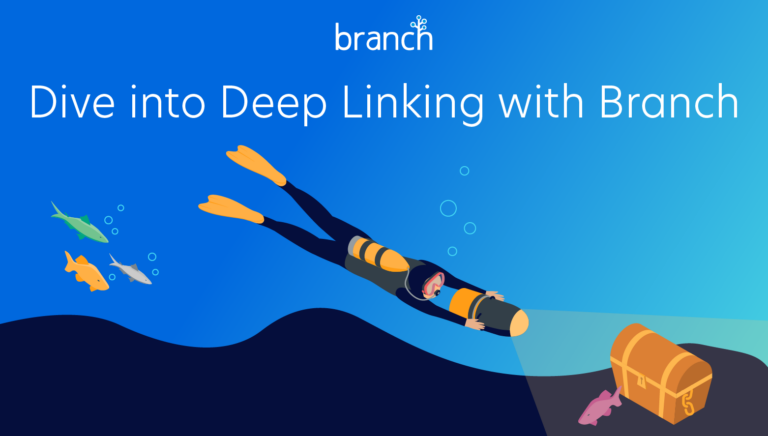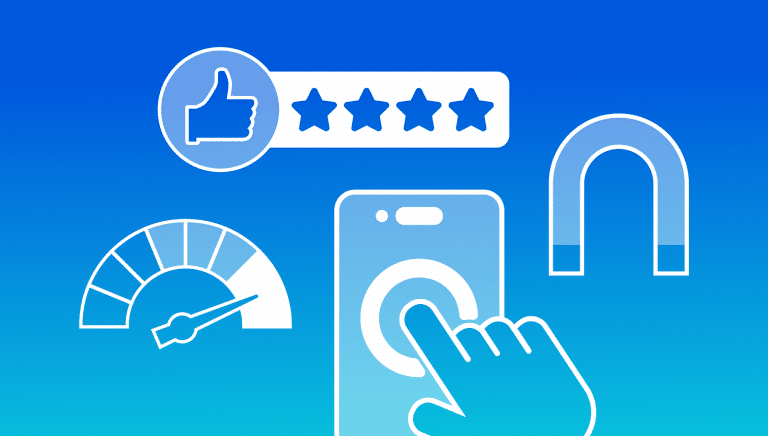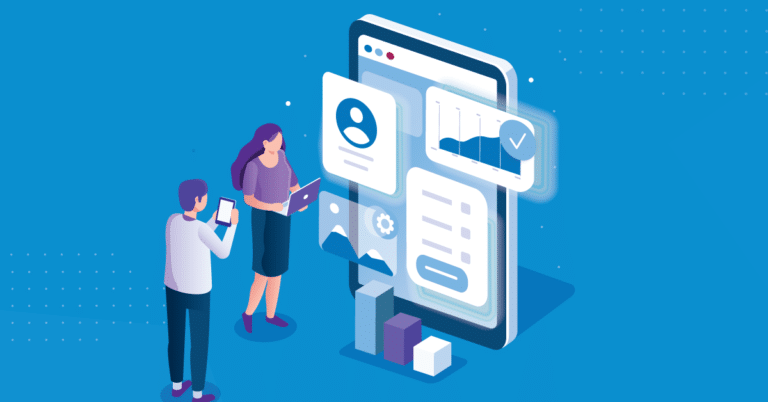DEEP LINKING
Eliminate the frustration of broken links
Take your customers to the content they want
Provide effortless user experiences
Inspire users to take action with powerful deep links that work everywhere.
Personalized user experiences
Deep links are perfect for improving the user app onboarding experience. This includes opening the door for personalized app invites or incentivizing users with custom promotional offers.
Optimized app conversions
A seamless deep linking experience increases revenue, loyalty, and lifetime value (LTV) compared to when users are brought to a generic landing page.
Higher retention and engagement
With deep links, you can reduce the risk of users falling out of the marketing funnel, delivering them to the relevant app content for higher engagement, better retention, and improved ROI.
Defining deep links
Deep links take users directly to relevant content in your app or website, rather than a generic homepage.
Once created, you can use a single deep link across all your channels: email, ads, QR codes, smart banners, in-app notifications, social media, and more.
Deferred – pass context through install
Deferred deep links can route users to specific content through an install. The link will first redirect to the App Store or Play Store, and once the app is downloaded and opened, the user will be taken to the content they expect.
Direct – app already installed
Traditional deep links route users to app content as long as the app is already installed when the link is opened.
Deep linking basics
URI schemes
Custom URI schemes were the original form of deep linking for mobile apps. They are like creating a “private internet” for your app, with links that look like myapp://path/to/content. The advantage of custom URI schemes is they are easy to set up and most apps already have one. The disadvantage is a user’s device only knows about this “private internet” if the corresponding app is already installed, and there is no graceful fallback option by default.
Universal Links
Apple introduced Universal Links in iOS 9 as a solution to the lack of graceful fallback functionality in custom URI scheme deep links. Universal Links are standard web links (https://mydomain.com) that point to both a web page and a piece of content inside an app. When a Universal Link is opened, iOS checks to see if any installed device is registered for that domain. If so, the app is launched immediately without ever loading the web page. If not, the web URL (which can be a simple redirect to the App Store) is loaded in Safari.
App Links
Google built App Links as the Android equivalent to iOS Universal Links, and they operate in a very similar way: a standard web link that points to both a web page and a piece of content inside an app. This results in a smoother user experience, but since custom URI schemes are still fully supported by every version of Android, App Links have seen very low adoption.
Install Referrer
An Install Referrer is essentially a string of code that can be sent by any link leading to an Android app store. Once the app is installed, the referrer data is retained by the app store. This data can then be retrieved from the app, and used to match the install with the source from where it originated. The most widely-adopted Install Referrer is the Google Play Install Referrer, but other Android app stores also support their own versions.
Branch simplifies linking on mobile
The Branch team is dedicated to providing a perfect deep linking experience:
- Links that work in every edge case to route users to the best destination
- The industry’s highest matching accuracy
- Every deep linking standard combined into a single, simple package
Drive action from every channel
Links for owned and earned as well as paid ads without needing to update or implement different tools for each channel.
Learn more about how Branch built a linking solution for every device
Build vs. Buy?
As the mobile ecosystem becomes more fragmented, link routing is becoming more complex.

Support

Guidance and advice from industry experts: Like an extension of your own team, your deep linking solution should go far beyond just product expertise to help you make the most of your mobile strategy. And not only that — protecting user privacy is now non-negotiable. This means you need a partner to ensure your privacy compliance efforts are up to industry standards.

Going it alone: Navigating the guesswork of the mobile linking space with limited knowledge can set you back.
Efficiency

A convenient, single interface: Measure link usage and performance, customize the user experience for each link, and measure the ROI of your mobile linking campaigns for email, sharing, social, and more, without the need to implement different tools for each channel.

Technical expertise required: This includes knowing how to handle the different types of links that can be created, which attribution partners to work with, and how to properly measure deep link usage.
Scalability

Future-proof your links: Automatically generate and update links at scale.

Time-consuming: It can take weeks or even months to build a deep linking infrastructure from scratch, and it is easy to make mistakes that break your links.
Cost

Cost-effective: A deep linking and mobile attribution system is a fiscally smart solution for consistently delivering a reliable deep linking user experience and shields your teams from systemic (and potentially costly) disruptions.

Expensive: You can easily spend a fortune on building and maintaining your own deep linking infrastructure.






























